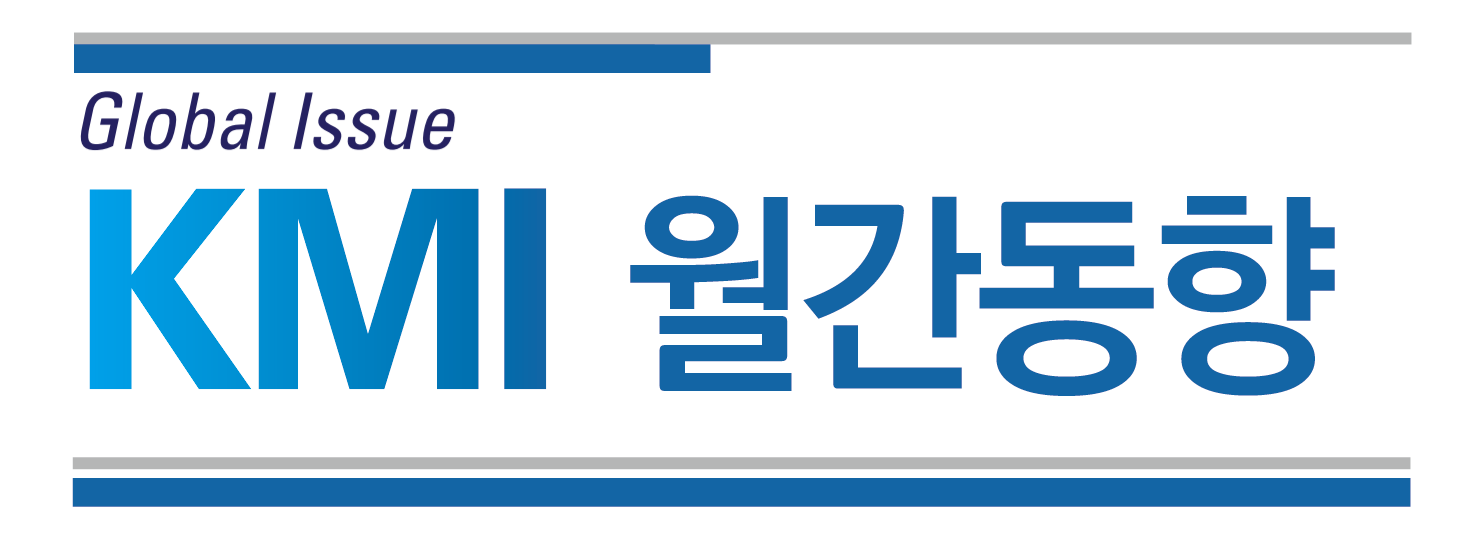-
- [수산 > 해외시장분석센터]2022-06-17 16:36:44/ 조회수 2145
- 태국 외식업체, 냉동식품에 대한 관심 증가
- 태국 식품 시장에서 냉동식품과 신선식품을 취급하는 비중이 비슷해지고 있습니다.
수산물의 경우, 신선도가 가장 중요한 요소라고 할 수 있는데 업체에서는 신선식품은 신선도 유지를 위한 유통비용이 많이 소모되나, 냉동식품은 상대적으로 비용을 절약할 수 있다는 점에서 매력을 느끼고 있습니다.
또한 현지 외식업체에서는 냉동식품이 신선도가 오래 유지되고, 요리 했을 때 신선제품과 비교하여 맛에서 큰 차이를 내지 않는 것으로 인식하며 냉동식품을 활용하는 비중이 높아지고 있는 것으로 나타났습니다.
https://www.brandbuffet.in.th/2022/05/frozen-material-trends-restaurant-makro/
| DonaldNed | <a href=https://vibrometro1a.com>equilibrado dinámico</a> Sistemas de balanceo: importante para el funcionamiento estable y productivo de las maquinarias. En el ámbito de la tecnología moderna, donde la efectividad y la confiabilidad del aparato son de suma importancia, los dispositivos de calibración juegan un rol esencial. Estos sistemas especializados están concebidos para balancear y estabilizar componentes dinámicas, ya sea en maquinaria productiva, vehículos de transporte o incluso en aparatos de uso diario. Para los profesionales en reparación de aparatos y los técnicos, manejar con sistemas de calibración es importante para garantizar el rendimiento fluido y confiable de cualquier aparato móvil. Gracias a estas soluciones avanzadas modernas, es posible limitar notablemente las movimientos, el estruendo y la carga sobre los sujeciones, prolongando la vida útil de elementos costosos. También significativo es el papel que desempeñan los dispositivos de ajuste en la soporte al usuario. El asistencia especializado y el reparación permanente usando estos dispositivos posibilitan proporcionar asistencias de excelente estándar, elevando la satisfacción de los consumidores. Para los responsables de emprendimientos, la aporte en unidades de ajuste y detectores puede ser clave para incrementar la eficiencia y eficiencia de sus sistemas. Esto es sobre todo significativo para los inversores que manejan pequeñas y modestas emprendimientos, donde cada punto vale. Asimismo, los equipos de calibración tienen una vasta utilización en el ámbito de la seguridad y el monitoreo de excelencia. Permiten localizar potenciales fallos, impidiendo reparaciones costosas y problemas a los aparatos. También, los datos extraídos de estos equipos pueden utilizarse para optimizar procesos y mejorar la exposición en plataformas de búsqueda. Las áreas de aplicación de los aparatos de equilibrado incluyen múltiples sectores, desde la producción de bicicletas hasta el control de la naturaleza. No importa si se considera de importantes elaboraciones industriales o reducidos talleres hogareños, los aparatos de equilibrado son fundamentales para promover un rendimiento productivo y libre de fallos. |
수정 | 삭제 |
|---|---|---|---|
| WilliamLed | <a href="https://vibromera.eu/example/the-imperative-of-centrifuge-balancing-in-industrial-operations/">centrifuge balancing</a> <div> <h1>The Importance of Centrifuge Balancing in Industrial Settings</h1> <p>Centrifuge balancing plays a crucial role in various industrial operations, especially within the chemical, food processing, oil and gas, and pharmaceutical sectors. These machines are vital for many tasks, and their effectiveness hinges on maintaining precise balance, particularly at high speeds. This document outlines the reasons centrifuge balancing is essential, how it can be performed effectively, and the tools required for proper execution.</p> <h2>Consequences of Imbalance in Centrifuges</h2> <p>Operating a centrifuge without proper balancing can lead to a series of detrimental issues. Firstly, an unstable centrifugal operation can severely affect product quality, as inadequate component separation can result in increased waste. For instance, in the food industry, this could spoil large quantities of products, leading to significant financial losses.</p> <p>Moreover, imbalance causes accelerated wear on critical components of the centrifuge such as bearings, shafts, and couplings. This rapid wear can lead to unexpected breakdowns, halting production lines and incurring high repair costs. Excessive vibrations from an imbalanced centrifuge can also generate high noise levels, which not only distracts employees but can also pose health risks over time.</p> <p>Finally, an imbalanced machine can lead to uneven loads, heightening the risk of cracks in the centrifuge casing and other operational malfunctions. Neglecting the importance of balancing can thus culminate in severe equipment damage and operational failures.</p> <h2>The Need for Dynamic Centrifuge Balancing</h2> <p>The implications of imbalance become more critical at higher rotation speeds. Dynamic balancing is essential to ensure that the centrifuge functions correctly and efficiently. Regular maintenance checks and preventive balancing can significantly extend the life of the equipment and avert costly downtimes that result from breakdowns.</p> <h2>On-Site Dynamic Balancing: A Practical Solution</h2> <p>Dynamic balancing is executed on-site without the need to dismantle the centrifuge. This method utilizes the machine's existing support bearings, offering several advantages:</p> <ul> <li><strong>Speed:</strong> Balancing can be performed quickly since it eliminates the need for transport and disassembly, translating to less production downtime.</li> <li><strong>Accuracy:</strong> Balancing the rotor in its operational bearings minimizes inaccuracies that could arise when balancing a removed component.</li> <li><strong>Minimal Intervention:</strong> This approach reduces the complexity associated with assembly and disassembly, conserving both time and resources.</li> <li><strong>Optimal Results:</strong> On-site balancing ensures the lowest possible residual imbalance, significantly enhancing the operation of the centrifuge.</li> </ul> <h2>Tools and Techniques for Effective Balancing</h2> <p>The Balanset-1A Vibration Analyzer is essential for initial vibration assessment and subsequent balancing. This portable device is recognized for its accuracy and user-friendliness, making it a key tool in the balancing process.</p> <h3>Steps for Balancing a Centrifuge Rotor</h3> <p>To effectively balance a centrifuge rotor, follow these outlined steps:</p> <ol> <li><strong>Equipment Setup:</strong> Install vibration sensors perpendicular to the rotor's rotation axis. Place one sensor on the front side and another on the rear side of the rotor. Secure the tachometer on a magnetic stand to ensure stability.</li> <li><strong>Tachometer Calibration:</strong> Attach reflective tape to the rotor pulley and aim the tachometer sensor at the tape for accurate revolutions measurement. Ensure the sensors and tachometer are connected to the Balanset-1A device, and launch the corresponding program on your computer.</li> <li><strong>Initial Measurements:</strong> Weigh a test weight and note its radius before starting the centrifuge rotor to reach its operational speed. Conduct the initial vibration level measurement.</li> <li><strong>First Plane Balancing:</strong> Place the test weight in the first plane where the first vibration sensor is mounted. Start the centrifuge again and perform a second vibration measurement, ensuring the vibration or phase has shifted by at least 20%.</li> <li><strong>Second Plane Balancing:</strong> Remove the test weight from the first plane and reinstall it in the second plane where the second vibration sensor is located. Conduct a third measurement to confirm adjustments.</li> <li><strong>Correction and Verification:</strong> Use the Balanset-1A program to determine how much corrective weight is needed and at what angle to install it. After removing the test weight and preparing the corrective weights, start the rotor for a final vibration measurement to verify balancing success.</li> <li><strong>Documenting Results:</strong> Remove all sensors and equipment after completion. Ensure to log all data in the balancing report for future reference.</li> </ol> <h2>Adhering to Balancing Standards</h2> <p>When performing centrifuge balancing, adherence to recognized standards—such as ISO 1940-1-2007—is critical. These standards define acceptable vibration levels for each category of equipment. Meeting these standards guarantees that the centrifuge operates reliably under various conditions, ultimately leading to enhanced efficiency and reduced wear.</p> <h2>Conclusion</h2> <p>Centrifuge balancing is a necessity, not merely a recommended practice, for maintaining effective industrial operations. Ignoring the balancing needs leads to increased wear, diminished productivity, and potential catastrophic failures. Utilizing advanced tools like the Balanset-1A allows for systematic balancing, fostering reliable and safe equipment operation. By prioritizing proper balancing procedures, companies can achieve significant savings on repairs and minimize production downtimes.</p> </div> Article taken from https://vibromera.eu/ |
수정 | 삭제 |
1















